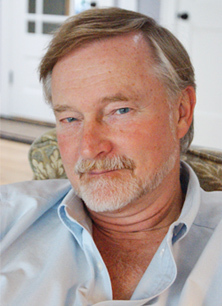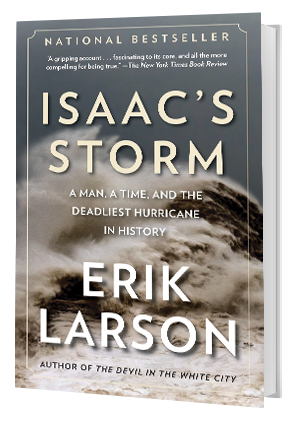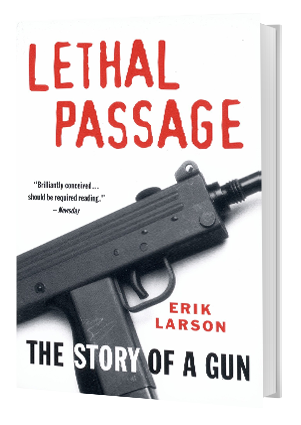Blog Readers discuss Erik Larson Books
This coming year, whatever book club meetings may look like, people will be discussing The Splendid and The Vile, Erik Larson’s latest narrative nonfiction. The purpose of this post is NOT to talk about The Splendid and The Vile but rather to look at Erik Larson as an author and to review a few of his other books.
In a recent interview appearing in the April 15, 2020, issue of Rolling Stone, Larson says that his mission when he writes a book is to provide a rich historical experience for the reader. He wants the reader, when done with the book, to “come out of it feeling as if maybe they lived briefly in a past time.” While doing extensive research, Larson makes wide us of the footnotes in the conventional historical accounts of the subject and time period. He says that scholars, “who are trying to get tenure somewhere….don’t have time to have fun with something because it wouldn’t be rewarded, they often stick the juice in the footnotes. And that’s where I go.”
In a past interview in Read it Forward, Larson explained his writing process. First of all, he does his own research instead of hiring an assistant. He is meticulous in old fashioned note taking, coding the notes and arranging them in chronological order before he starts to write. He uses as many primary resources as he can possibly find. Larson credits his years as a journalist with the Wall Street Journal and The Atlantic Monthly for giving him practice in writing news stories. He considers his books to be stories, true stories.

Larson currently lives in Manhattan with his wife, who is a retired neonatologist. They have three grown daughters. He has taught non-fiction writing and spoken to audiences across the country. He says that he has no idea what his next book will be about except to say that it won’t be about the Spanish flu or any type of pandemic. He’s living through a pandemic now and doesn’t want to revisit it!
Reader Reviews of Books by Erik Larson
Larson’s In the Garden of Beasts is non-fiction. It focuses on the American ambassador to Germany and his family living in Berlin in 1933, the first days of Hitler’s regime. While his daughter has affairs with Nazi officials, the ambassador tries to inform FDR of the unfolding Nazi nightmare while battling the good-old-boy anti-Semitic US State Department officials who consider him an unworthy outsider.
“Beasts” was published in 2011, early in a decade when a slew of WWII books captured readers across the States. For me, “Beasts” faded in the wake of All the Light We Cannot See, The Nightingale, and Under the Scarlet Sky. Those works of fiction all succeeded in telling new and novel stories about the war. Perhaps if I read “Beasts” now, it would be far more powerful, since I’m sure I would be comparing Germany’s rising fascism and maniacal leadership to patterns at here at home. Madeleine Kaye
DEAD WAKE: LAST CROSSING OF THE LUSITANIA–Erik Larsen is definitely a master of narrative nonfiction. I have read both Devil in the White City and In the Garden of Beasts and was enthralled by both and the insight into the time and place in history. It was the same with Dead Wake, which describes the doomed voyage of the Lusitania. The book presents a fresh perspective on history and decisions being made at that critical time before we entered World War I. The sinking of the ship changed the rules of modern warfare forever. It is also an interesting portrait of America at the height of the Progressive Era. I must admit, as much as I learned from, and enjoyed , this book it was not my favorite of his works. I felt there was too much detail about 20th century marine architecture and the engineering of the ship. It weighed the book down and impeded the exciting flow of the narrative. SueEllen Hanan
I loved the details that drew me into the period in which Devil in the White City is set. The whole idea that people could simply disappear with relative ease because communication and record keeping was so limited was a revelation. By chance I read Water for Elephants at the same time and found them to be perfect companion books. The importance of the exhibition to the city of Chicago, the challenges and vision that made it a reality and its impact on the country that I learned from reading the book brought that time to life for me. Although it has been years since I read it, I find it illuminates my understanding of things I am reading now. I am currently reading Gods of the Upper Air (How a circle of renegade anthropologists reinvented race, sex, and gender in twentieth century) by Charles King. The exhibition impacted a young Franz Boas, a central character in this book, early in his career. Professor Boas would later inspire and guide the groundbreaking work of his students, Margaret Mead, Zora Neal Hurston and others. Cathi Barlow
Other books by Erik Larson




